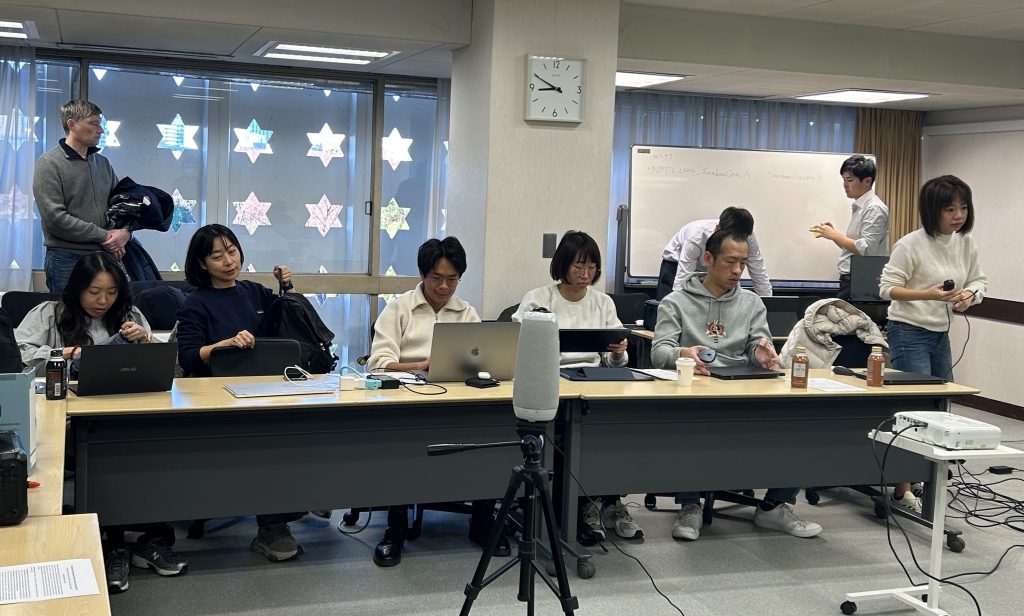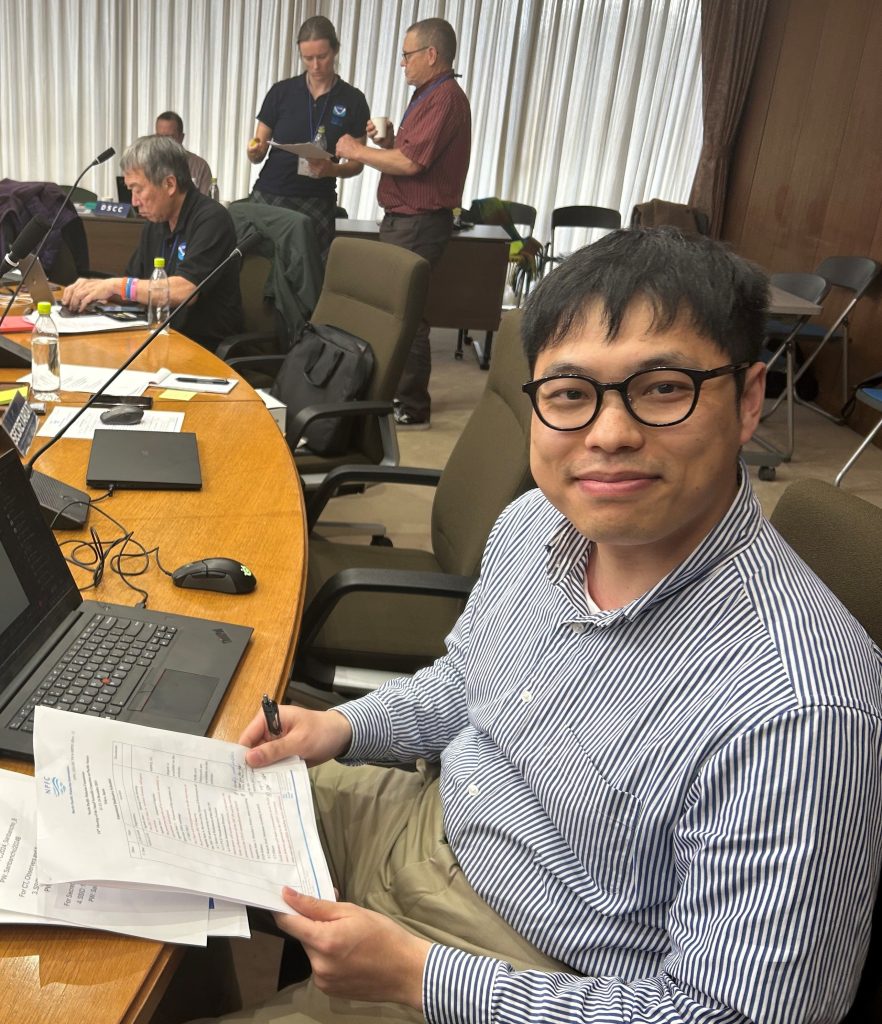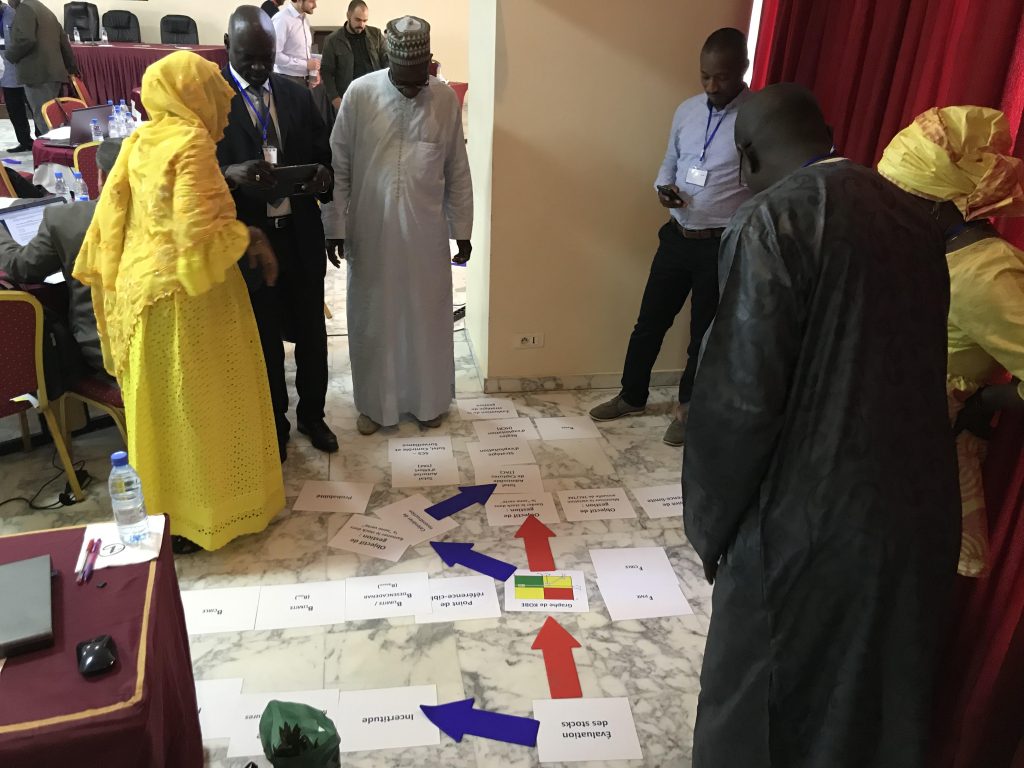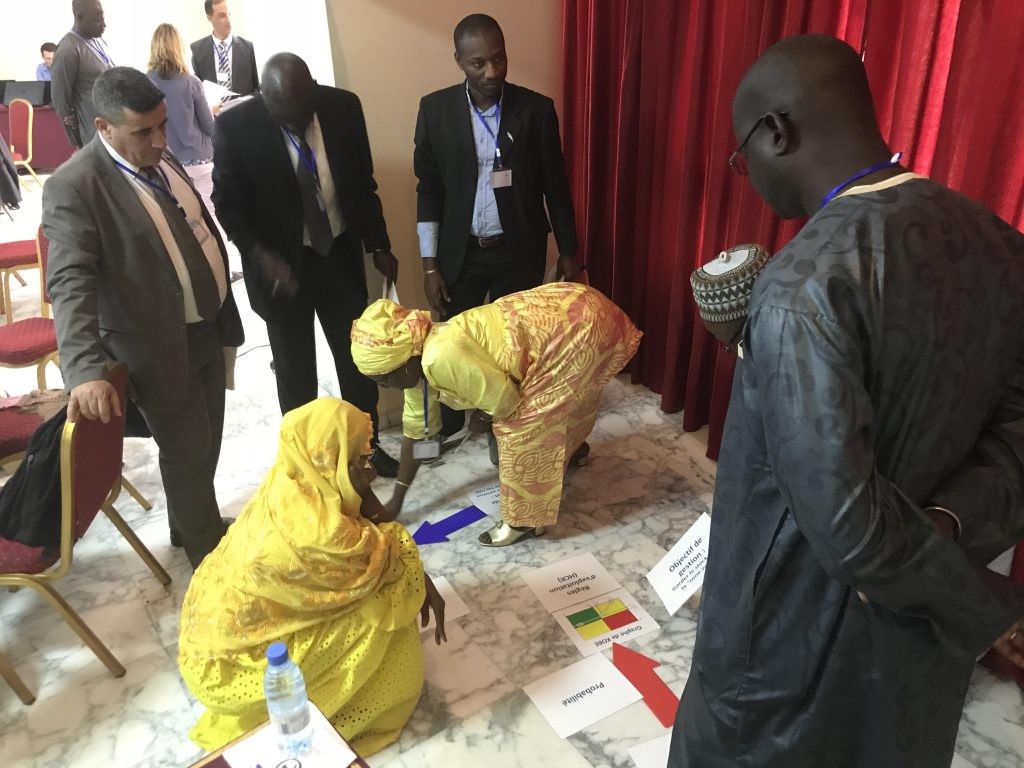Deep-sea fisheries (DSF) provide valuable seafood and economic benefits, but the unique characteristics of deep-sea ecosystems and the slow growth, late maturity, and low reproductive rates of many deep-sea species pose scientific and technical challenges in their management. The application of the precautionary approach in this context is not just beneficial; it is critical for ensuring the long-term viability of these fisheries and the surrounding marine environment. Well-designed harvest strategies, also known as management procedures that define clear objectives and adaptive measures to achieve them are an accepted application of the precautionary approach and offer a structured framework for sustainable deep-sea fisheries management.
A virtual workshop organized by the Common Oceans Deep-sea Fisheries Project, held on October 15, 2024, brought together 87 experts from regional fisheries management organizations (RFMOs), policymakers, academia, NGOs, and industry stakeholders to discuss the application of the precautionary approach (PA) to DSF in areas beyond national jurisdiction. Below, we provide some of the key discussion points, recommendations, and outcomes from the workshop.
Understanding the Precautionary Approach
The PA is a fundamental principle in sustainable fisheries management, emphasizing risk-averse management approaches to prevent overfishing and ecosystem damage. Accentuating preventive measures, this approach is particularly relevant for deep-sea fisheries, where data may be sparse, and the ecological impacts of fishing practices are not fully understood. The PA is underscored by international agreements such as the UN Fish Stocks Agreement (UNFSA), the FAO Code of Conduct for Responsible Fisheries (CCRF), and the International Guidelines for the Management of Deep-Sea Fisheries in the High Seas.
The virtual workshop focused concretely on applying the PA to DSF management with the objective of ensuring the long-term sustainability of stocks. Within this context, it explored the usefulness and feasibility of adopting long-term management plans for key target DSF stocks, which define clear objectives and establish threshold biomass points that trigger specific management decisions.
Workshop Highlights
The Workshop aimed to assess existing practices, identify challenges, and propose measures for strengthening the application of the PA to DSF. The discussions revolved around:
International Policy and Legal Frameworks
Scientific Considerations
Case Studies of PA implementation from dsRFMOs:
Integrating Harvest Strategies into DSF Management
Key Challenges
While the importance of PA in DSF management is well-recognized, several challenges hinder its effective implementation:
Recommendations for Strengthening PA implementation
Participants proposed several actionable steps to support the application of the PA:
1. Capacity Building & Training
2. Guidance & Best Practices
3. Strengthening RFMO Processes
4. Expanding Access to Tools & Resources
Conclusions and Looking Ahead
The DSF Project’s workshop underscored the importance of integrating the application of the precautionary approach to ensure the long-term sustainable management of deep-sea fisheries. The workshop emphasized the need to approach management with a long-term vision and highlighted the potential of harvest strategies to meet this need. The DSF Project and partner organizations remain committed to advancing good practices in DSF management, ensuring that deep-sea fisheries resources remain resilient and productive for future generations.
About the Project
The Deep-sea Fisheries under the Ecosystem Approach (DSF) project is one of five child projects of the Global Environmental Facility funded Common Oceans Program Phase II (2022-2027). The DSF project is implemented by FAO and executed by the General Fisheries Commission for the Mediterranean (GFCM) in collaboration with co-financing partners, which include the seven regional fisheries management organizations (RFMOs) responsible for the management of deep-sea fisheries stocks in areas beyond national jurisdiction (ABNJ)[1], as well as other international and national organizations[2]. The objective of the project is to ensure that DSF in the ABNJ are managed under an ecosystem approach that maintains demersal fish stocks at levels capable of maximizing their sustainable yields and minimizing impacts on biodiversity, with a focus on data-limited stocks, deepwater sharks, and vulnerable marine ecosystems.
Resources
To learn more about deep-sea fisheries, make use of our free E-learning course on Strengthening deep-sea fisheries management in areas beyond national jurisdiction
To take part in deep-sea fisheries technical discussions, join our Deep-Sea Fisheries Technical Forum
[1] General Fisheries Commission for the Mediterranean (GFCM), North East Atlantic Fisheries Commission (NEAFC), Northwest Atlantic Fisheries Organization (NAFO), North Pacific Fisheries Commission (NPFC), South East Atlantic Fisheries Organization (SEAFO), Southern Indian Ocean Fisheries Agreement (SIOFA) and South Pacific Regional Fisheries Management Organization (SPRFMO)
[2] International Council for the Exploration of the Sea (ICES), Southern Indian Ocean Deepsea Fishers Association (SIODFA), International Coalition of Fisheries Association (ICFA), and the National Oceanic and Atmospheric Administration (NOAA) of the United States of America
About the Authors
Eszter Hidas is the Project Manager of the Common Oceans Deep-Sea Fisheries Project (2022-2027). Eszter is a marine ecologist by training and has worked in the field of international fisheries policy and management for the last 17 years, with placements in Ho Chi Minh City, Barcelona, Brussels, and Rome. In addition to other organizations, she worked for WWF for 8 years before transferring to FAO, where she has been based for the last 6 years.
Sarah Fagnani is an international fisheries policy and legal expert currently working with the Food and Agriculture Organization of the United Nations (FAO) on Global Environment Facility (GEF) projects focused on deep-sea fisheries governance and the implementation of the BBNJ Agreement. With extensive experience in fisheries policy, legal frameworks, and international regulatory compliance, she has contributed to key initiatives aimed at strengthening fisheries management, combating illegal, unreported, and unregulated (IUU) fishing, and enhancing monitoring, control, and surveillance (MCS) measures.
At FAO, Sarah is actively engaged in policy gap analyses, stakeholder consultations, and capacity-building efforts to support sustainable fisheries governance at national, regional, and global levels. Her work includes facilitating intergovernmental cooperation, developing legal and technical guidance, and assisting countries in aligning their regulatory frameworks with international commitments.
With a strong background in policy development, legal advisory, and multilateral collaboration, Sarah is committed to advancing science-based, sustainable fisheries governance to ensure the long-term health of marine ecosystems.
The North Pacific Fisheries Commission (NPFC) is a relatively new Regional Fisheries Management Organization (RFMO) with the overarching objective of ensuring the long-term conservation and sustainable use of the fisheries resources in its Convention Area while protecting the marine ecosystems of the North Pacific Ocean.
Having participated in preparatory meetings before this RFMO was ratified in 2015 and chaired its Scientific Committee for the past five years, I have observed the NPFC’s Scientific Committee establish defensible processes for undertaking quantitative analyses, including stock assessments, and providing science-based advice to the Commission to achieve its overarching objective.
During the past decade, NPFC Members have collaborated on stock assessments of two priority species – Pacific saury (Cololabis saira) and chub mackerel (Scomber japonicus) – and have been studying other NPFC priority species. The NPFC adopted an interim harvest control rule (HCR) for Pacific saury in 2024 based on preliminary simulation testing, while a full management strategy evaluation (MSE) is developed for that species.
The NPFC’s Scientific Committee has been learning about and building capacity to develop MSE for its priority species since 2019, when its Biological Reference Point/Harvest Control Rule/Management Strategy Evaluation Workshop was convened to consider potential directions on the application of biological reference points (BRPs), HCRs, and MSE for NPFC’s priority species. During that workshop, one invited expert described how conducting an MSE can be a lengthy process. Still, the lessons learned from conducting it for one species can be transferred to others, making future MSE processes more efficient. Another invited expert underscored the importance of improving communication for more effective MSE processes. Participants also noted that consideration could be given to the role of climate variability when providing scientific advice because MSE is a robust tool to evaluate the resilience of HCRs to different climate scenarios.
In 2021, the NPFC established a Small Working Group on MSE for Pacific Saury (SWG MSE PS) as a joint subsidiary body that included participation from its Scientific Committee, Technical and Compliance Committee, and Commission (joint SC-TCC-COM SWG MSE PS). The overall purpose of the SWG MSE PS is to provide a forum for consultation and cooperation among scientists, managers, stakeholders, and observers, akin to the science-management dialogue groups in use at other RFMOs. The SWG MSE PS’ functions include developing and submitting recommendations to the Commission on a draft interim HCR, draft management objectives, key sources of uncertainty, and, if feasible, candidate management procedures (MPs), as well as facilitating communications among commissioners, scientists, managers, stakeholders, and observers.

In anticipation of future participation of the NPFC’s Scientific Committee in MSE processes for priority species, the Scientific Committee has been exploring options to build capacity to undertake the technical analyses that underpin MSE. Recently, the Scientific Committee and the NPFC Secretariat accepted the offer from The Ocean Foundation and www.HarvestStrategies.org to organize an informal workshop on management strategy evaluation with the OpenMSE R package. The workshop side-event was led by Dr. Tom Carruthers and Dr. Adrian Hordyk of Blue Matter Science in December 2024 on the margins of the Scientific Committee’s ninth meeting. The first part of this workshop focused on introducing the philosophy, concepts, and terminology of MSE. The second part of the workshop was a demonstration (coding) of the technical components of MSE using the OpenMSE R package, including operating model specification, MP development and tuning, running the closed-loop calculations of an MSE, calculating performance metrics, presenting MSE performance outcomes and trade-offs, and developing exceptional circumstances protocols. Over 20 people from the NPFC’s Scientific Committee or Secretariat registered for this hybrid workshop.
Given the NPFC’s Resolution on Climate Change, which tasks its Scientific Committee with integrating analyses of climate change relevant to NPFC fisheries into its work plan, Dr. Carruthers was also invited to present tools for incorporating climate change considerations into scientific advice. His presentation suggested that it is unnecessary to know the exact type or level of forecasted impact to identify an MP that outperforms other MPs in terms of climate robustness. He also presented how the climate robustness of MPs can vary depending on their specification.
Drawing on NPFC Scientific Committee funds for capacity building, Dr. Libin Dai of China will spend a week in early 2025 working with those at Blue Matter Science in part to develop a stock assessment model for neon flying squid, learn more about applications of the openMSE R package for NPFC’s priority species, and learn about integrating climate information into a stock assessment framework and MSE for neon flying squid.

I am heartened to know that NPFC Members and observers recognize the importance and value of MSE in informing fisheries of priority species management, especially when considering MPs that are resilient to the impacts of climate change. This is also related to two key recommendations (3.2.2 and 4.5.4) of the 2022 NPFC performance review. The NPFC is actively building knowledge and capacity within its scientific and management communities to understand and undertake the analyses needed to inform MSE processes. To this end, The Pew Charitable Trusts and The Ocean Foundation are convening a side event during the ninth NPFC Commission meeting that will explore further opportunities for the NPFC to build its capacity. I look forward to a day in the near future when scientists can communicate and work effectively with managers and stakeholders to implement NPFC MPs that can meet multiple objectives of sustainable use.
Dr. Janelle Curtis is a Research Scientist at Fisheries and Oceans Canada. She has been chairing the NPFC’s Scientific Committee since April 2019.
Here at www.HarvestStrategies.org, the New Year’s resolution is always to catalyze the development and adoption of robust management procedures (MPs) for fisheries around the world. 2024 saw impressive progress, with MP adoption for North Atlantic swordfish, Indian Ocean swordfish and skipjack, North Pacific saury, and Adriatic Sea anchovy and sardine. Notably, these are the first MPs for swordfish and forage fishes adopted by regional fisheries management organizations (RFMOs), marking a significant step forward in applying a broader ecosystem approach. These 5 adoptions brought the total number of MPs for internationally managed stocks to 15. If we make that kind of progress again this year, adding 5 more adoptions, we’ll have 20×25 – 20 total international MPs by 2025.
There are 11 stocks slated for MP adoption this year, so securing 5 is a realistic goal, regardless of the challenges of consensus-based management at the RFMOs. Here are the stocks we’re tracking this year in chronological order.
If we hit the 20×25 target, the number of international MPs will have doubled in two years — evidence of the tremendous progress in MP development. With even more internationally managed stocks slated for MP adoption in 2026, the tide is turning toward a future where MSE-tested MPs will bring a more transparent, predictable, and science-based approach to achieving long-term abundant and sustainable fisheries.
Needless to say, there’s a lot of work to be done this year. Please check back here regularly to see how 20×25 unfolds!
The ICCAT annual meeting wrapped up on Monday in Limassol, Cyprus. Management procedures (MPs) were the big winners of the meeting, with progress made on eight different stocks. This remarkable advancement affirmed ICCAT’s commitment to transitioning its management to MPs as a more science-based and transparent approach to achieving long-term sustainability for its $5.4 billion fisheries.
North Atlantic Swordfish: A Landmark Success
An MP was adopted for North Atlantic swordfish, marking ICCAT’s first MP for a non-tuna species. Twenty-five years ago, there was a boycott of North Atlantic swordfish, given its dire status. Today, the stock is fully recovered, and the new MP will lock in this abundance and ensure a vibrant fishery for years to come. The MP was also evaluated to ensure that it can be responsive to any negative impacts of climate change on swordfish abundance, ensuring a sustainable system even in a changing ocean.
The northern swordfish catch limit will increase by 12% next year, the first catch increase for swordfish since 2002. Importantly, the adopted MP is called “MCC,” which stands for “Mostly Constant Catch,” as it is designed to secure long-term stability in the fishery, which is good for business, both on fishing vessels and in seafood markets.
West Atlantic Skipjack: Significant Progress Despite Delay
While we had hoped an MP would be adopted for West Atlantic skipjack, ICCAT members decided that they needed a bit more information before selecting a specific MP. They, therefore, stopped just short of MP adoption, finalizing operational management objectives and giving clear guidance on how to put the finishing touches on the management strategy evaluation (MSE), the results of which will determine the MP to be adopted next November. This still remarks tremendous progress and is cause for celebration.
Forward Momentum for Other Important Stocks
ICCAT also agreed to interim management objectives for the other three tropical tunas – bigeye, yellowfin, and East Atlantic skipjack. The new measure contains important information to guide and reinvigorate the multispecies MSE underway for those stocks, calling for MP adoption in 2026. We note that the 50% probability of having each of the stocks not overfished and not subject to overfishing is a minimum standard for MP development, and we will work with ICCAT members to ensure that the likelihood is raised to at least 60% for the final MP. A coin flip’s chance of success is insufficient, especially given the number of livelihoods and coastal communities that depend on these stocks.
South Atlantic albacore and North and South Atlantic blue sharks round out the list of MP actions, with objectives agreed upon for the former and all three stocks added to ICCAT’s MSE workplan.
Charting a Sustainable Future
The outcomes of the Cyprus meeting reaffirm ICCAT’s leadership in global fisheries management. By adopting a new MP and providing guidance on MP development for 7 other stocks, ICCAT is charting a path toward more sustainable and resilient big fish fisheries. The Commission is well-positioned to secure the long-term health of these key resources and the communities that depend on them. The coming year will be pivotal as these initiatives take shape, and we at www.HarvestStrategies.org look forward to continuing to engage as a stakeholder in the process.
When I first delved into the world of harvest control rules and harvest strategies in 2011 during my time with WWF as their global tuna lead, I saw it as a critical opportunity to ensure sustainable fisheries. At the time, except for Southern Bluefin Tuna, none of the tuna RFMOs had established effective harvest strategies, despite the clear benefits they offered. It was a moment where the scientific community, NGOs, and some in the industry began to rally around this concept, recognizing that pre-agreed frameworks for managing fishing effort could mitigate the volatility and short-term pressures that often dominate RFMO negotiations.
A key challenge we encountered early on was the lack of understanding among stakeholders, particularly those outside the scientific realm. Harvest strategies were often perceived as a ‘black box’ solution—complex and intimidating. This is where capacity building became essential. Working on the Common Oceans Project, we hosted a series of workshops, using interactive tools to demystify harvest strategies and get participants actively involved in shaping their development. I remember one workshop vividly: participants were surprised to learn that there isn’t always a single “right” answer when mapping out a harvest strategy. Different components, such as reference points and harvest control rules, can be arranged in multiple ways, depending on the needs of specific fisheries. This flexibility is one of the greatest strengths of harvest strategies, allowing them to be tailored to the unique challenges each fishery faces.

While we’ve made significant progress—tuna RFMOs have adopted several harvest control rules in recent years—the true challenge lies ahead: effective implementation. In the Indian Ocean, for example, despite adopting harvest control rules for skipjack tuna, we’ve seen significant non-compliance with recommended catch limits. Moving forward, compliance isn’t just about enforcement. It’s about fostering goodwill, ensuring all stakeholders feel invested in the long-term goals of sustainable management, and developing fair allocation systems that work for everyone involved.

Monitoring and enforcement will also play a crucial role. The adoption of advanced technologies, like electronic monitoring systems and automated data analytics, will be essential to ensuring that harvest strategies work in practice. We’ve already seen fisheries adopt management procedures that integrate such tools, and it’s a model that will need to be expanded globally.
The journey of implementing harvest strategies over the past decade has been transformative. In 2014, I was thrilled to see mainstream media in the UK publish pieces on the need for harvest control rules and the European retailers demanding this—something unheard of when I began this work. Today, many of our GTA partners instantly understand the value of these strategies. This is a credit to all the capacity building that has happened. However, as we look ahead, ensuring robust compliance and continued capacity building will be critical to their long-term success.
At the Global Tuna Alliance (GTA), our global supply chain partners are deeply committed to pushing for progress in this area. Over the next five years, we will leverage our partnerships to advocate for the effective uptake and critical implementation of harvest strategies across all tuna RFMOs, ensuring that our tuna fisheries remain sustainable for future generations.
About the Author: With 20 years of experience in fisheries and marine conservation, Daniel Suddaby has a deep passion for the ocean, marine life, and sustainable fishing practices. He is an expert in tuna, advocacy, and sustainable market tools that drive change in fisheries and seafood supply chains. Prior to joining the GTA, Daniel founded and led the Tuna and Distant Water Fisheries Program at Ocean Outcomes, building effective relationships with longline tuna and supply chain companies to incentivize transformation through tools such as the Marine Stewardship Council (MSC) Fishery Improvement Projects. Previously, Daniel spent six years as the Deputy Leader of the World Wild Fund for Nature’s (WWF) global fisheries initiative, leading global engagement in tuna fisheries and advocacy in all Regional Fisheries Management Organisations (RFMOs), and providing strategic direction to WWF International on seafood engagement. He also has experience as a Senior Fisheries Certification Manager for the MSC.
Squid fisheries are some of the most important but undermanaged fisheries worldwide. Cephalopod catches, which include squids, made up about 11 percent of the global catch of marine species in 2022.
Because of their short lifespan, rapid growth, and fluctuation with changes in environmental conditions, applying traditional fisheries management approaches has been challenging. The result: important stocks of squid are being harvested without hard, science-based limits on fishing or even an understanding of the health of the resource.
The management procedure approach offers a solution to the tricky problems involved in squid management. And it could be in the Pacific, the ocean basin where more of the world’s squid is harvested than any other, where management procedures (also called harvest strategies) for squid are demonstrated on an international level.
Two regional fisheries management organizations in the Pacific, the North Pacific Fisheries Commission (NPFC) and South Pacific Fisheries Management Organisation (SPRFMO), have an express remit to manage squids. They are, in fact, the only two RFMOs with squid as a key species covered by their conventions.
This year, NPFC and SPRFMO are taking steps to improve their focus on squid sustainability, but they need to ramp up their efforts to make a lasting impact. NPFC in August held its first small scientific committee meeting focused on neon flying squid to accelerate efforts to develop the first stock assessment for that stock, whose stock status is unknown at the international level. The largest harvesters are China and Japan.
Turning south of the equator, SPRFMO’s Scientific Committee, which is about to begin its annual meeting on Sept. 30, is due to receive a report on the progress of a new task team focused on assisting in the development of SPRFMO’s first stock assessment for jumbo flying squid, whose status also is not estimated by an assessment across its range but is nonetheless being harvested within the Convention Area and members’ Exclusive Economic Zones in the amount of one million metric tons a year. That makes jumbo flying squid in the South Pacific the single largest squid fishery in the world. China is the significant harvester in the international waters, while catches in Peru’s waters are of a similar scale, with lesser catches in Chile’s and Ecuador’s waters.
Both RFMOs have plans to investigate the use of Management Strategy Evaluation (MSE) to better account for the uncertainty in key biological components of their squid fisheries, with potential plans leading to the development of harvest control rules. These aspirations are laudable, but they need to be made much more concrete and translated into actions.
To accelerate their work, members in the two RFMOs should commit to developing full management procedures, tested via MSE. They should also commit to fully sharing scientific and fleet information as necessary to better understand the dynamics of their fisheries, and create science-management dialogue groups with the resources and timelines to efficiently step through the process of developing management procedures.
If data availability problems continue, data-limited approaches should be investigated to develop the MSEs, which could test the performance of simple management procedures against the potential range of different population dynamics (as well as other uncertainties).
Amidst concerns for the global sustainability of squid stocks, with researchers finding that fishing effort on squid increased 68 percent from 2017 to 2020, NPFC and SPRFMO should seize the opportunity to demonstrate how management procedures could help chart out a more sustainable path for these important squid species, one that could be followed by other squid fisheries.
Squids are both a commercially and ecologically important species, playing an integral role in marine ecosystems as prey for swordfish, sharks, tunas, marine mammals, and seabirds. However, concerns over the declining abundance of squid and lack of management measures to safeguard these fisheries cannot be overstated. It’s imperative that NPFC and SPRFMO members advance modern, science-based fisheries management for these species by strengthening data reporting, creating science-management dialogue groups and beginning the development of management procedures.